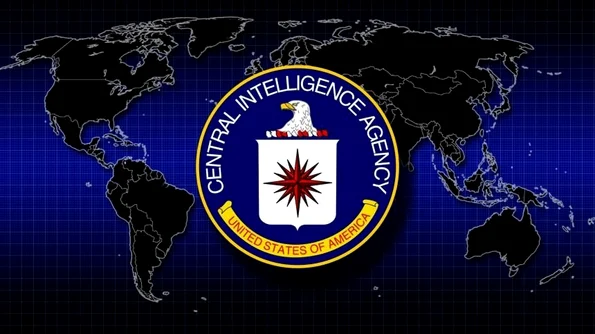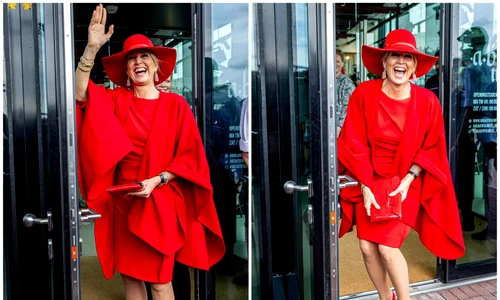
The 7 Governments Overthrown by the CIA’s Clandestine Operations
Leaders of the Third World, be they dictators or democrats, were drawn into the Cold War’s ideological conflict between the US and the USSR. The struggle for mastery in the international system made some of these leaders lose their positions or even lives. The US Administration admitted to some of the CIA’s secret ops, however, there are still numerous major political events in which allegedly the American Secret Services were involved.
CIA’s involvement in seven covert operations – not to mention the American military interventions against hostile regimes, in the favour of pro American insurgents or in assassination attempts – made the US appear as a “scarecrow” in the midst of nowadays international political tensions. Yet, the American Administration does not find this situation as an inconvenience.
Iranian Coup d’Etat (1953)
The era of the CIA supported coup d’états entered the stage in a dramatic way:An American general went to Iran so as to meet “old friends”;in the following sequence of events, the Shah ordered Mohammed Mossadegh to resign. When the Iranian Army started to hesitate, millions of dollars were sent to Tehran so as to buy off Mossadegh’s old supporters and to finance street protests. Once the Army accepted the change in the country’s leadership, Mossadegh was captured and sentenced to house arrest for life. During his two years as prime minister, Mossadegh undermined the Shah’s authority by nationalizing the oil industry which was previously controlled by American companies.
CIA’s Iranian clandestine operation was known under the codename TPAJAX and its purpose was the consolidation of the Shah’s authority and the avoidance of a possible Soviet aggression in Iran in the early stages of the Cold War (this operation was carried out on the background of Soviet, American and Chinese involvement in the Korean War).
From the beginning, the main purpose of this CIA op was the ousting of the Iranian government. The 1953 Iranian coup d’état was one of the many clandestine CIA activities of the second half of the 20thcentury which were intended to overthrow governments hostile to the US.
The Clandestine CIA Operation in Guatemala (1954)
Even though the US initially supported the regime of the Guatemalan President Jacobo Arbenz, everything changed when he introduced the agrarian reform which menaced the American United Fruit Company.
The 1954 coup d’état organised by the CIA ousted Arbenz and established a military dictatorship in Guatemala. CIA operations were aimed at arming the rebels and certain paramilitary Guatemalan troops as well as implementing a US Navy blockade on the country’s Pacific coast.
The Congolese Coup D’état (1960)
The President Joseph Kasavubu managed to oust the Congolese Prime Minister Patrice Lumumba during the Belgian Army’s intervention in Congo (supported by the US), in order to protect Belgian economic interests after the decolonization. Lumumba created an anti-Belgian Army paramilitary organization, yet he was subsequently found by the CIA agents since the American Administration labeled him as a threat to the new regime of Joseph Mobutu.
The 11 American Senators of the Church Commission were entrusted in 1975 with the mission of analyzing CIA’s clandestine operations. The Church Commission discovered the methods employed by the CIA, in order to assassinate Lumumba. In 1960, after a failed attempt to kill Lumumba by the aid of a poisoned napkin, CIA alerted the Congolese troops which managed to arrest and assassinate Lumumba.
The Dominican Republic, 1961
Rafael Trujillo’s brutal dictatorship, which organized the ethnic cleansing of thousands of Haitians and staged an abortive assassination attempt against the Venezuelan President, ended when armed political dissidents murdered him. The Church Commission discovered in 1975 that the CIA provided Trujillo’s assassin with three pistols and three rifles.
The CIA Engagement in South Vietnam (1963)
In 1963, the US had been already heavily involved in the Vietnamese conflict when its relation with the South Vietnamese leader Ngo Dinh Diem became even more strained, because of Diem’s repression against the Buddhist dissidents.
According to Pentagon documents on August 23rd, 1963, South Vietnamese generals appealed to the CIA officials, in order to organise a coup against Ngo Dinh Diem. The Agency accepted their request and provided the generals with a financial support of 40.000 $ which enabled them to assassinate Diem on November 1st, 1963.
Moreover, the papers of the Pentagon mention the fact that “the US has to assume full responsibility for the organization of the coup d’état against Ngo Dinh Diem.”By its participation in the operation, the US ensured the success of the assassination attempt and therefore, took part in the creation of the South Vietnamese new government.
The Brazilian Coup d’état (1964)
The US feared that the regime of the Brazilian President Joao Goulard would transform Brazil in a 1960s China. Therefore, the USA staged a coup d’état under the leadership of the Brazilian Chief of Staff Humberto Castello Branco. In the days before the coup, CIA encouraged street protests against the government and furnished the pro-Branco troops with non – American weapons.
National Security Archive declassified certain documents which confirmed that President Lyndon Johnson planned the Brazilian coup with his advisors. The military dictatorship managed to survive in Brazil until 1985.
The CIA Orchestrated Chilean Coup D’état (1973)
The US had never accepted Salvador Allende, the Socialist President – elect of Chile. Therefore, the President Richard Nixon asked CIA to engage in activities which would undermine the Chilean economy. In order to overthrow Allende, the Agency cooperated with three opposition groups, yet the coup met with failure, because the US did not trust the Chilean opposition. The US economic warfare in Chile stopped only when the state was on the verge of collapse.
On the background of a chaotic economic situation, General Augusto Pinochet rose to power after the successful coup of September 11th, 1973. Once Pinochet became president, the Agency started a propaganda campaign, in order to show its support for the new Chilean administration, even though the regime was guilty of grave infringements of Human Rights and of murdering political dissidents.
The US Attachment to CIA’s Clandestine Operations
Although it would like its foreign policy to be perceived as transparent, the American Administration had become too fond of clandestine operations, in order to relinquish them. The Agency is an important element in the American foreign policy decision process and it enjoys a high level of independency from the US Administration which had actually created it.
There still lingers the suspicion that the US organizes different types of covert operations with the aid of CIA:financial support for the opposition to governments hostile to US policy, political blackmails, propaganda, psychological and economic warfare, military aid to rebel groups in countries opposed to American policy, paramilitary operations, coup d’états and assassinations. The US detention centers for people suspected of terrorist activities cast a doubt over the entire American diplomacy and created international tension, because inside these facilities the Geneva Convention for the treatment of war prisoners had not been implemented.
The reason behind every CIA clandestine operation is the protection of national security in the face of terrorist threats.
Bibliography
John Jacob Nutter, The CIA's Black Ops:Covert Action, Foreign Policy, and Democracy , Prometheus Books, New York, 2000.
http://www.foreignpolicy.com/articles/2013/08/19/map_7_confirmed_cia_backed_coups















